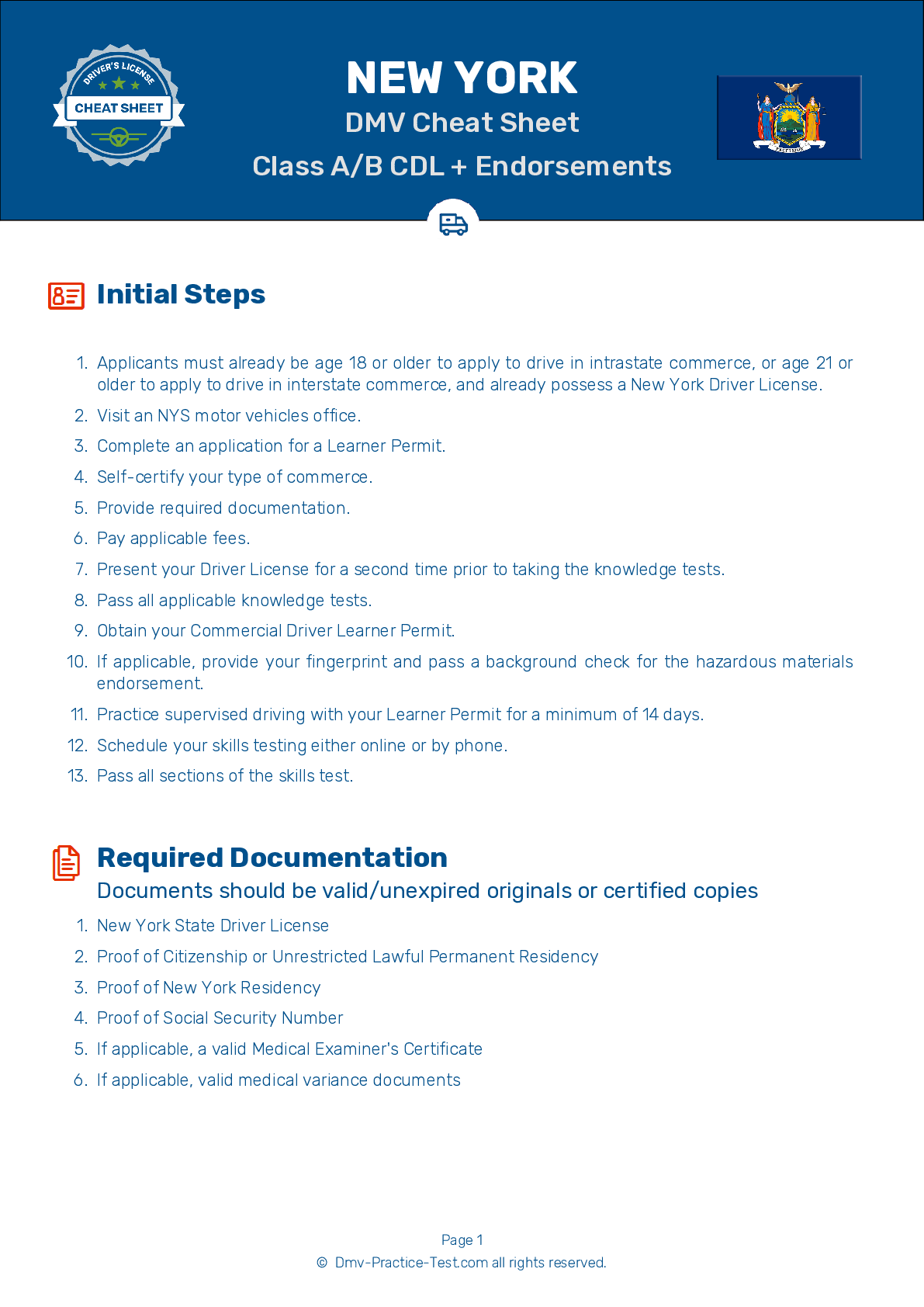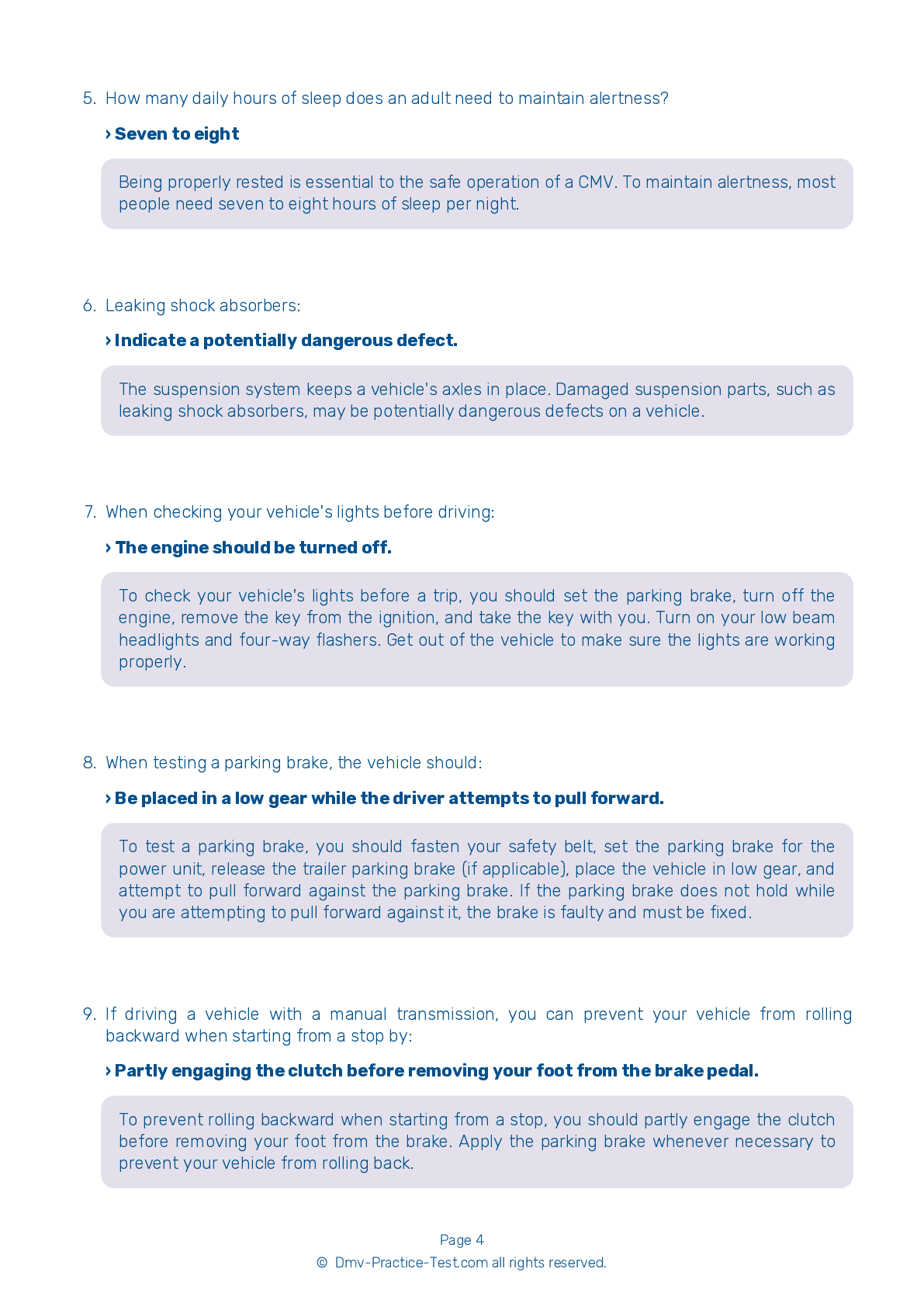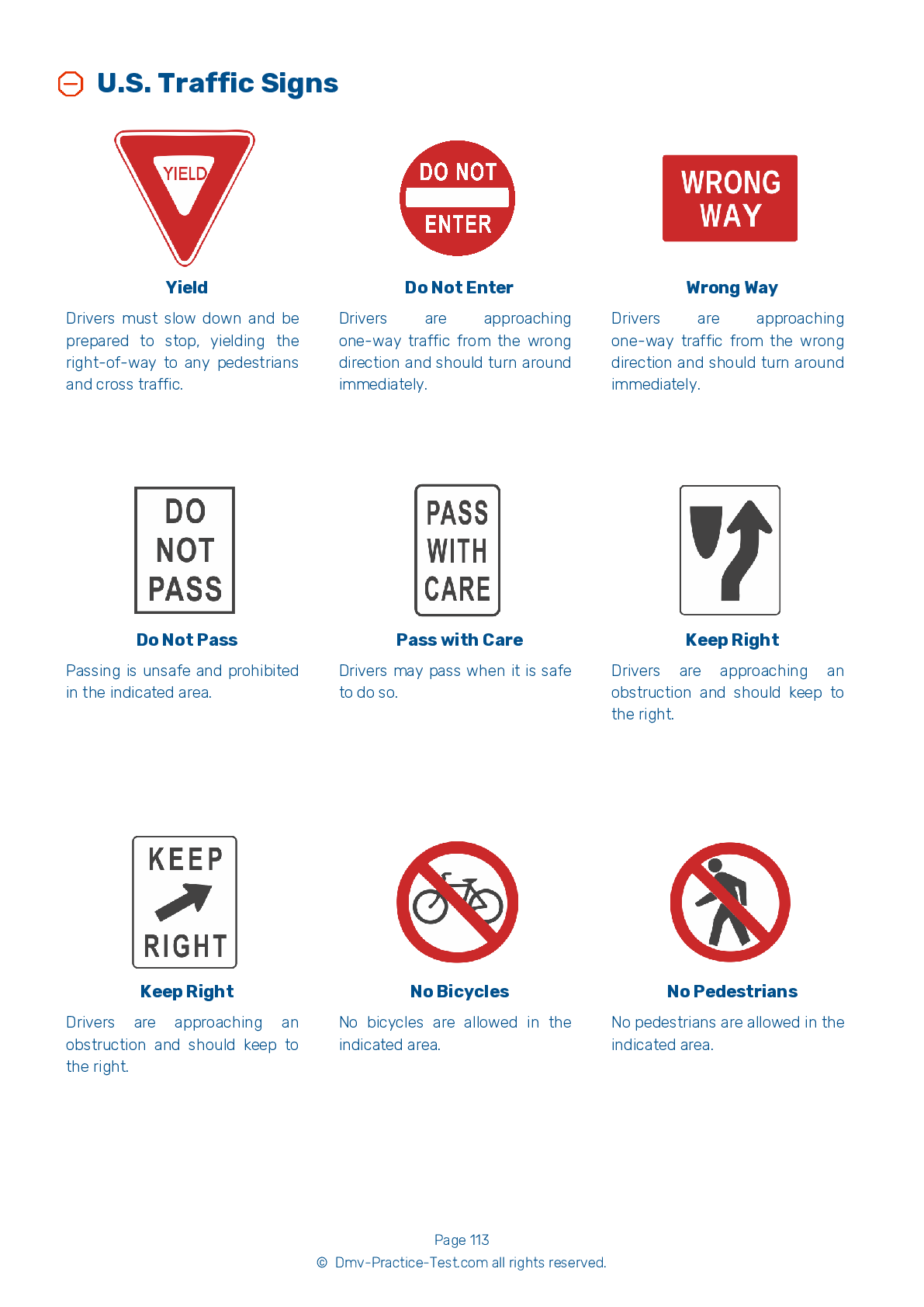Air Brakes #1
Air Brakes Endorsement Test | New York 2025 #1 Page 4 of 4
Train for FREE online with our New York CDL air brake test. The official exam test consists of several obligatory parts, with all of them checking your knowledge of different blocks of road rules. If you need to obtain a NY Class A/Class B driver license in 2025, practice as much as possible. Free sample tests published on our website will help you check and improve your knowledge and boost your grades. Please bear in mind that the requirements for CDL may vary from state to state.
25
20
20
19 . Where is the safety relief valve usually located?
On the dashboard
An air brake system's safety relief valve is located in the tank that is first to receive air from the compressor.
20 . What happens if the air pressure in a system's air tanks falls below 60 psi?
The vehicle should stop.
In an air brake system, a low pressure warning signal should activate if the pressure in the air tanks falls to a level below 60 psi. This signal may be in the form of a warning light or a wig wag.
21 . Most heavy-duty vehicles use:
Quadruple air brake systems.
Most heavy-duty vehicles use dual air brake systems, in which there are two separate braking systems operated by a single set of controls. Each system operates the brakes on different axles.
22 . To inspect slack adjusters on S-cam brakes, you need to:
Chock the wheels and disengage the parking brake.
Check each slack adjuster after parking on level ground, setting wheel chocks, and disengaging the parking brake. Pull the slack adjusters to make sure they do not move more than about one inch from where the push rod is attached. If they move more than one inch, they may be out of adjustment and will need to be fixed.
23 . What is removed when an air tank is drained?
Chlorine
In an air brake system, the air storage tanks are equipped with drains to allow water and compressor oil to be removed. The water and oil can damage the brakes if left to accumulate in the system.
24 . During an applied leakage test, the maximum leakage rate for a single vehicle with air brakes is:
4 psi in one minute.
It is important to know the maximum air loss rate that is safe for your specific vehicle. A single vehicle with air brakes should have a leakage rate no higher than 3 psi in a minute during an applied leakage test.
25 . When only the tractor is equipped with an Anti-Lock Braking System (ABS):
The brakes will become more sensitive.
If a tractor is equipped with an Anti-Lock Braking System (ABS) but the trailer is not, the risk of jackknifing will be reduced and the driver should still be able to maintain steering control. If only the trailer is equipped with ABS, it is less likely that the trailer will swing out to one side.
2025 New York | Frequently Asked Questions
A CDL Class A license in New York allows the holder to operate any combination of vehicles with a Gross Vehicle Weight Rating (GVWR) of 26,001 pounds or more, given that the GVWR of the vehicle(s) being towed is in excess of 10,000 pounds. This typically includes tractor-trailers and truck and trailer combinations.
A Class A CDL license in New York allows the operation of a variety of vehicles such as tractor-trailers, truck and trailer combinations, tank vehicles, livestock carriers, and flatbeds. It also includes any combination of vehicles with a Gross Vehicle Weight Rating (GVWR) of 26,001 pounds or more if the towed vehicle is over 10,000 pounds.
To obtain a Class A CDL license in New York, applicants must be at least 21 years old (18 for intrastate), possess a valid New York driver's license, pass a vision test, and successfully complete a written knowledge test. They also need to pass a skills test, which includes a pre-trip vehicle inspection, a basic controls test, and an on-road driving exam.
To qualify for a Class A CDL license in New York, you must be at least 21 years old for interstate travel. However, if you are between 18 and 20 years old, you can still obtain a Class A CDL but you are restricted to intrastate travel within New York State only.
Specific endorsements aren't required for a Class A CDL license, but they can enhance your driving privileges. Endorsements include T (Double/Triple Trailers), P (Passenger), N (Tank Vehicles), H (Hazardous Materials), and S (School Bus). Each endorsement requires passing additional knowledge and skills tests.
The Class A CDL skills test in New York encompasses three main areas. First, a pre-trip vehicle inspection to assess your ability to evaluate if your vehicle is safe. Second, a basic controls test to check your understanding of the vehicle's operations. Lastly, an on-road driving exam to demonstrate your driving skills in various traffic situations and maneuvers.
Yes, there are limitations. Class A CDL license holders in New York can't drive vehicles with manual transmission if they took their skills test on an automatic transmission vehicle. Additionally, restrictions may apply if the driver lacks air brake knowledge or fails the air brake component of the general knowledge test. Also, certain endorsements might be necessary for specific types of cargo.
Yes, it's possible to take the written Class A CDL test in languages other than English in New York. The New York DMV offers the written test in multiple languages. However, federal regulations require that all CDL holders understand and read English well enough to converse with the general public, understand highway traffic signs and signals, respond to official inquiries, and make entries on reports and records.
Yes, accommodations can be made for the Class A CDL written test due to disability. New York State Department of Motor Vehicles (DMV) complies with the Americans with Disabilities Act (ADA). You can request special testing accommodations by completing form MV-44.5 "Application for License, Permit, or Non-Driver ID Card" and form MV-80U.1 "Application for an ADA Accommodation."
Yes, if you don't pass the Class A CDL written test in New York, you can retake it. However, there's a waiting period of at least one day before you can try again. Remember, you need to pay a test fee each time. It's advised to study the CDL manual thoroughly before reattempting.



